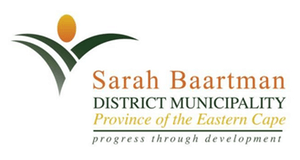Sarah Baartman - Hankey
- Hankey
Sarah Baartman
Very little is known about the early years of this Khoekhoe girl. She was born around 1789 in the Eastern Cape, somewhere in the vicinity of the Gamtoos river. By 1806 she had moved to the Western Cape and stayed in rural Maitland. In 1810, while she was working as a maid on the farm of Peter Cezar, her life changed. She was persuaded by Alexander Dunlop, a ship surgeon, to embark on a ship for England, not knowing that she would never see her birth place again. Governor Caledon gave permission that she could be taken to England and the young Sarah was exhibited as the "Hottentot Venus" in Piccadilly Circus.
The European public and scientists were fascinated by her prominent posterior and sex organs. She was put into a cage and described as 'a wild animal'. Amused onlookers paid an admission fee and then she was paraded, half-naked, in the cage. This inhumane treatment of the young Khoi-San girl forced the African Association in London into action and Dunlop was taken to court. The case was dismissed, however, as a document was produced that indicated that she had agreed to come to London "of her own free will".
Little is known of the rest of her life in England, but it is documented that she was baptised in an Anglican Church in Manchester, England on 1 December 1811. There is some indication that she married a West Indian by whom she had two children.
In 1814 Hendrik Cezar, brother of her former employer, took her to Paris where he sold her to a showman Reaux, who exhibited her in the Rue Neuve des Petits. She was, once more, the object of amusement and derision. In March of 1815 she was examined by a commission of zoologists and physiologists and was also painted in the nude. Her health declined and she died during the next year at the age of 27, possibly of pneumonia. A mold was made of her body so that a positive image could be created. This is still on show at the Musée de l'Homme in Paris. Within hours of her death, prominent French scientist, Georges Cuvier, was granted permission to dissect her. He paid special attention to her buttocs, private parts and brain. After the dissection, her sceleton, together with her brain and external private parts, was mounted on a stand for display at the museum. In 1974 her remains were removed and placed in storage.
The struggle to get her remains back to South Africa started in 1995 when the South African and French Governments got together to discuss the matter. On 21 February 2002 the French National Assembly unanimously voted in favour of her return to the land of her birth.
The struggle to get her remains back to South Africa started in 1995 when the South African and French Governments got together to discuss the matter. On 21 February 2002 the French National Assembly unanimously voted in favour of her return to the land of her birth.
The struggle to get her remains back to South Africa started in 1995 when the South African and French Governments got together to discuss the matter. On 21 February 2002 the French National Assembly unanimously voted in favour of her return to the land of her birth.
On 1 May 2002 campaigners rejoiced when the remains of Sarah Bartmann finally returned to South Africa after an absence of nearly 200 years. Fitting festivities were organised to celebrate her return and to ensure that her remains were treated with great reverence. A traditional Khoi-San "dressing" ceremony was held on Sunday, 4 August 2002. These festivities were seen not as an opportunity to to mourn the death of Sarah Baartman, but to rather celebrate her life and her image.
The process was started to decide where the proper place was for her to be laid to rest. Different groups in the Eastern, Western and Northern Cape wanted the honour, but it was decided to bury her in the Eastern Cape where it is thought she was born. After deliberations the decision fell on Hankey, a small, rural town on the banks of the Gamtoos river. The site on Vergaderingskop chosen for the burial place overlooks a beautiful section the fertile Gamtoos valley.
Women's Day on 9 August 2002 was chosen as the fitting date for the burial. Numerous South African dignitaries, including President Thabo Mbeki attended the proceedings. In his address the president proclaimed the site a heritage site and it will be marked as such.








